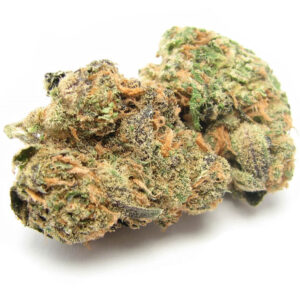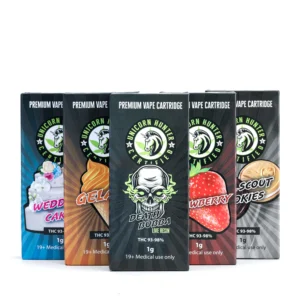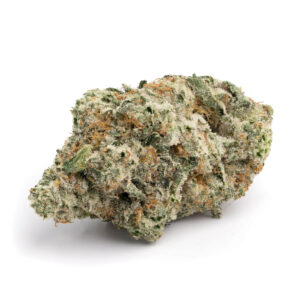Cannabis products are a popular topic in the world today. There are so many different options, most people don’t know where to start. It can be difficult to determine which product is right for you. There are many different cannabinoids and they each work differently in your system. It seems impossible to know how they can determine the THC content, but there must be a way. Alcoholic beverages all list the alcohol content as a means of informing consumers about the product. Everyone has seen “% abv” or something to that effect on the side of a bottle of beer or a bottle of wine. Cannabis companies have begun to use different types of advanced technology to ensure that the cannabis product they make is both consistent and potent. This article explains a little about how companies are working hard to figure out precise THC content, among other cannabinoids.
High performance liquid chromatography machines are the current reigning champion of determining THC levels in a given product. The science behind it is complex. These are machines that are able to reliably determine the THC content of a particular flower by reading the ultraviolet (UV) light cast from the molecules of THC/CBD etc… Leafly.ca(1) states that most companies use “High Performance Liquid Chromatography (HPLC).” to determine a flower’s given THC content. This goes all the way to a molecular basis, and determines the THC content by reading the amount of UV light reflection off the individual molecules as they pass through the system. As the molecules are slightly different in nature, they pass through the system at different intervals, which allows the machine to differentiate between them.
There are multiple steps in the process of determining THC content. Once a scientist in front of an HPLC machine, a cannabis flower is broken up and then mixed with a solvent, most likely ethanol. The scientist then processes the sample through a multi-faceted closed system and a digital reading is produced. This reading is observed and the results recorded for each sample. Once an average begins to emerge, they can say, with a good amount of confidence, the precise cannabinoid content of the tested product.
You’ll always see THC and sometimes you’ll see CBD on the side of a cannabis package. The company that produces these machines is Shimadzu.(2) They have a machine that can test for eleven different types of cannabinoid (D9-THC, D8-THC, THCA, THCV, CBD, CBDA, CBDV, CBG, CBGA, CBN, and CBC.) From the HPLC reading, we can then accurately determine the average THC and CBD content of any product. It is this percentage reading that you will see printed on the sides of cannabis packages.
There is not yet standardized testing in the marijuana industry, but HPLC is quickly becoming one of the most popular ways to find THC content as it is both an effective and reliable way to determine THC content. By using the most current science we are able to get the most accurate reading. This is important because we need to know what we are consuming. If something is inaccurately labeled as low THC when in reality it’s quite high, you might end up consuming more than you bargained for.
Though the reading is accurate and reliable, HPLC machines can be quite expensive. The closed system and proprietary technology are difficult to produce, and to have a singular machine determine precise levels of molecular cannabinoids requires significant research and engineering. There are alternatives if you don’t have thousands of dollars to purchase an HPLC machine.
If you are attempting to determine THC content at home, or lack access to advanced technology, it is possible to determine THC content with a simple kit. Test4kits.com produces such a kit. They are under $100 and they are able to determine accurately whether the product has between 1-20% THC. Above 20% THC the readings become difficult to determine with the kit, because the kit is only made to determine up to a maximum of 20%. Over that amount everything will simply register as 20% THC, so if you have a 30% strain, the kit will only tell you it has at least 20% THC.
The good people at massroots.com (3) performed a comprehensive test with a strain that was supposed to be 20% THC. They put a small amount of cannabis flower in a test tube, using multiple samples, and filled the tubes with the kit solution. The tubes were then allowed to sit idle for about 10 minutes, and the solution changed in colour to deep red, determining that the ‘Kosher Kush’ indeed had at least 20% THC. This sort of accountability testing is important in the growing cannabis industry, as there are significant amounts of misinformation being spread. People deserve to know exactly what they are getting when they make a purchase, in order to make an informed decision.
These are just a couple of the ways to determine THC content. There are alternatives to HPLC technology as well; sequential injection chromatography (SIC) is simpler, cheaper, and easier to use than HPLC technology, SIC is still in it’s early stages however, so it remains to be seen whether or not this technology will come into widespread use for the determination of THC content.
nt. With so many different strains, products and ideas floating around, how do you know the people on the other side of the counter or at the website are telling the truth? There is a lot of blind-guesswork on the consumer side of things. The at-home test kit is a good way to determine whether the flower you bought has the THC the store said it would, but at $70 AUD a pop, most of us would never buy it. There is an inherent trust we have when purchasing cannabis product that the product will work as described. With this technology it is possible to determine beyond a shadow of a doubt that the product is actually good quality.
References:
- https://www.leafly.ca/news/science-tech/how-does-thc-cbd-lab-testing-work
- https://www.ssi.shimadzu.com/products/liquid-chromatography/cannabis-analyzer.html
- https://www.massroots.com/news/thc-test-kit/






